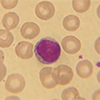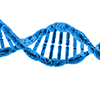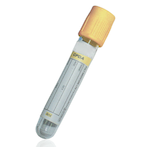Ferritin
Specimen Volume
1 mL bloodSpecimen Transport
Ambient temperatureSample Preparation
Centrifuge
Turnaround Time
1 daySample Processing In Laboratory
Usual
Sample Stability
Store serum at 2-8˚C for up to 7 days. For longer periods, store serum frozen at -20˚C.
General Information
Ferritin is the major intracellular iron storage protein in mammals, and it's measurement offers the best non-invasive test for iron deficiency. Serum ferritin has been shown to correlate well with total body stores in normal subjects and in patients with iron deficiency or transfusion iron overloads, and is thus considered to be a satisfactory index of body iron status. Serum ferritin concentrations are high at birth, but fall during the first few months and remain low in childhood. In healthy adults the level varies with age and sex. Males have higher concentrations than pre-menopausal females, but this difference may diminish in later years. In healthy individuals, ferritin concentrations are usually above 15 ng/mL, and low concentrations are usually indicative of depletion of iron stores. However, ferritin is an acute phase protein and patients with iron deficiency may have plasma concentrations within the reference range when they are acutely ill. Elevated ferritin levels unrelated to iron stores are also seen in case of alcoholic or viral hepatitis, and chronic renal failure. Problems of interpretation can also arise in the elderly, where not only is there an increase in ferritin levels with age, but also a higher prevalence of chronic disease. If anaemia is suspected, a ferritin level less than 50mg/L may indicate inadequate iron stores for effective erythropoiesis. Ferritin concentration is increased in iron overload, for example haemochromatosis, but may also be increased in some patients with liver disease and come cancers.
Patient Preparation
Samples from patients receiving high biotin doses (i.e. >5 mg/day) should be taken at least 8 hours post dose. In rare cases, interference due to extremely high titers of antibodies to analyte‑specific antibodies, streptavidin or ruthenium can occur. These effects are minimized by suitable test design. Please inform the laboratory if the patient has been treated with monoclonal mouse antibodies or may have received them for diagnostic purposes. Iron 2+ and Iron 3+ at therapeutic concentrations do not interfere. Grossly haemolysed samples should not be analysed because the release of intracellular ferritin can cause an increase in ferritin concentration by 60%.
Notes
Ferritin is measured using an electrochemiluminescence immunoassay at University Hospitals Birmingham. Under steady-state conditions, the serum ferritin concentration is proportional to the total body iron stores, and so is proposed as the best and most convenient laboratory test to estimate iron stores and diagnose iron deficiency or iron related disorders.
Reference Range
New Ferritin reference range (µg/L)
Females 20 – 235
Males 22 – 501
Please note new reference range in use from 04/12/23. This change was agreed with consultant haematologists following a recent audit examining the appropriateness of the current Ferritin reference range. If you have any further questions regarding this change, please contact the Duty Biochemist on 0121 3716543”
Source of Reference Range
In house auditSpecifications
-
EQA Status:
NEQAS
- EQAS Scheme: Yes








